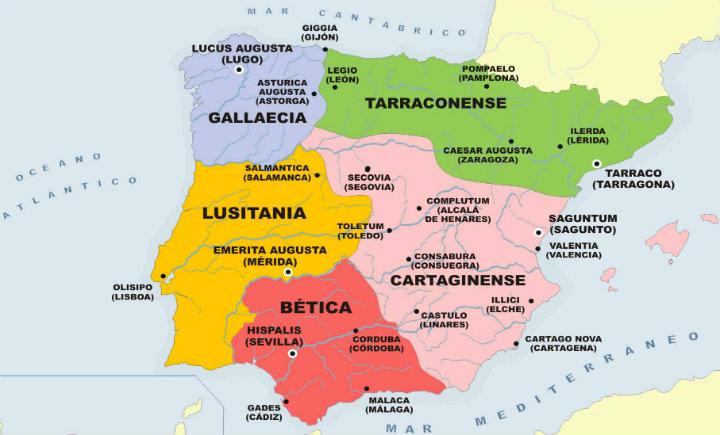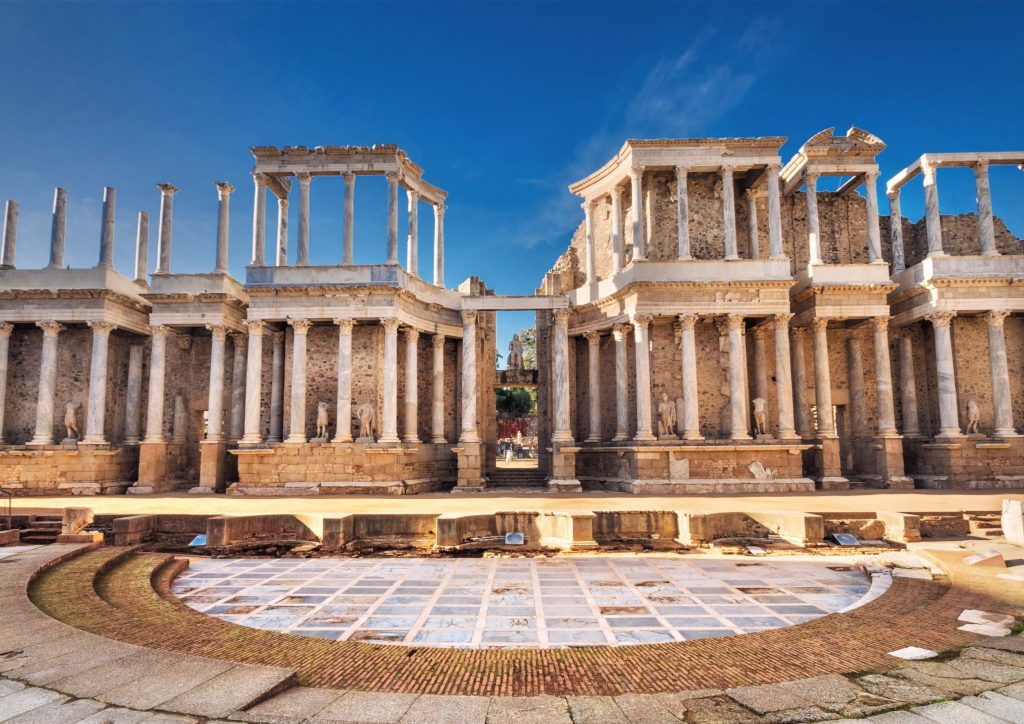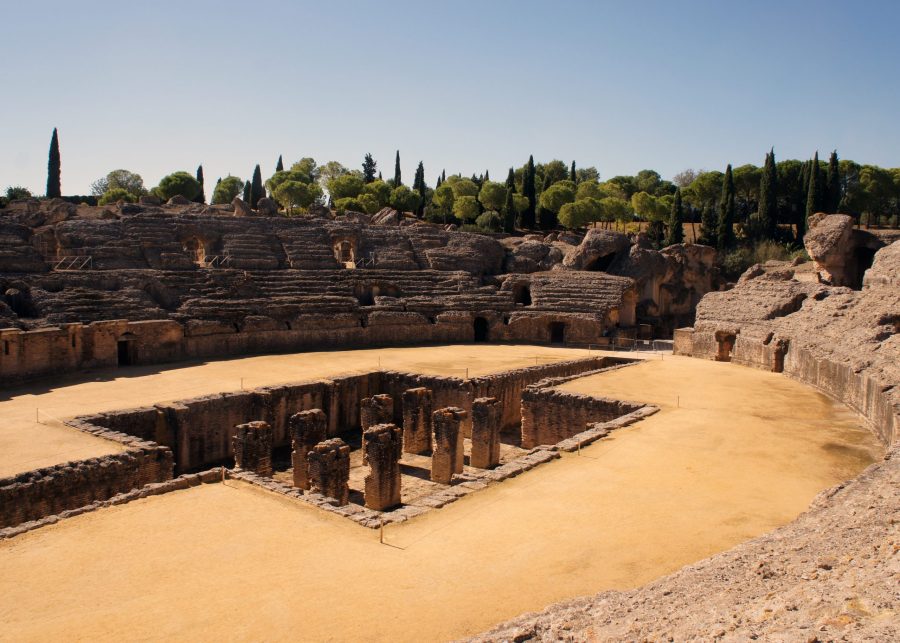To put things into perspective man has to know about the past. During the countries history and to the present day, Spain has played an important role in the progression of the Western World. InSpain.news gives a resume of the history of Spain based on several (scientific) sources. This is part 3. Read parts 1 here and 2 here.
The Romans and Itálica
Itálica (10 km from present Seville, partly on the territory of the current town of Santiponce) became the first Roman settlement on the Iberian Peninsula. Part of Italica has been excavated and is now an important archaeological site. It includes an amphitheatre that could host 25,000 people, houses and mosaics.
Cartagena
Cartagena remained an important city in the Roman empire (capital of the province of Carthaginensis). In the contemporary Cartagena you will find many remains of Phoenician and Roman times, besides a large Roman amphitheatre.
Mérida
In 25 BC, Emperor Augustus founded the city of Emerita Augusta, strategically located on the Rio Guadiana River. It became the capital of the Roman province of Hispania Lusitania. Mérida, is now the capital of the autonomous region of Extremadura. Many monuments from Roman times are preserved in Mérida, including a temple, a theatre, an amphitheatre, houses and mosaics. The bridge over the Rio Guadiana is a fine example of Roman engineering.

Spain in Roman times
The bridge, El Puente Romano, is the largest preserved Roman bridge with a span of 792 metres. It formed an important link between Lisbon and the cities of Cordoba and Zaragoza. The bridge has undergone restoration a few times. It remained in use for traffic until the end of the 20th century. It remains open to pedestrians.
Mérida is one of the largest archaeological sites in Spain, despite the fact that the Arabs almost completely destroyed it in 713 A.D. With her many, relatively well preserved monuments, Mérida was placed on UNESCO’s World Heritage List in 1933.

Roman theatre in Merida
The Romans in Córdoba, Toledo and Segovia
Baetica (about the territory of the present Andalucia) became a rich and developed province of the Roman Empire, with Corduba (Córdoba) as the main city. Spain takes its name (Hispania) and its languages (Castellano, Galician and Catalan) from this era. During the Roman empire Christianity was also introduced. The current infrastructure of Spain was, to a significant extent, developed in Roman times, when Toletum (Toledo) was the hub of all roads. After Madrid became the capital, the layout was slightly modified.
Related post: 12 impressive Roman monuments in Spain
The most famous aqueduct in Spain is located in Segovia. During Roman rule, an important Jewish colony established itself in Spain. The Emperors Trajanus (98-117 AD) and Hadrianus (117-138 AD) were born in Italica. Under Trajanus the Roman Empire reached its largest size. Although later conquerors destroyed much of Roman culture, there are still many Spanish cities that have a Roman theatre or amphitheatre as heritage. These are symbols of ‘bread and games for the people’ (Panem et circenses). A great example of this in our present time is also the football club Betis (Baetica) Sevilla, which finds her most loyal support in the Triana district of Seville (named after Emperor Trajanus).
Invasions of German tribes
In the 3rd century, the Roman empire slowly began to exhibit weaknesses and ruptures. On the Iberian Peninsula, invasions by Germanic tribes from the north disturbed the peace. At the end of the 4th century, the Roman realm consisted of two parts, the West Roman (including the Iberian Peninsula) and the Eastern Roman Empire, of which the capital became Byzantium.
The end of the West Roman empire
By the end of the 4th century, the Huns, with their trek from eastern Europe/Asia westward, gave the impetus for the Great People’s Movement. The situation caused a conflict between the then habitants and the Visigoths on the Danube. Many Germanic tribes from northern Europe fled southward, over the Pyrenees and the Alps. The West Roman Empire, now exacerbated by decadence, corruption, economic malaise and internal twist, could not resist the invasions of Germanic peoples. In 476 the Visigoths sacked Rome which brought the end to the once great West Roman Empire.
The visigoths
In the 6th century, the Visigoths also conquered most of the Iberian Peninsula, partly on the weakened Roman empire, partly on other Germanic tribes (vandals) who had already settled there and made Mérida their capital. Baetica (Andalucia) still held the longest position as part of the (Eastern) Roman Empire, but in 622 the Visigoths took hold. Toletum (Toledo) became the capital of the Visigoth Empire. The eastern Roman (Byzantine) empire existed until 1453 when the Turks conquered the capital Constantinopl


